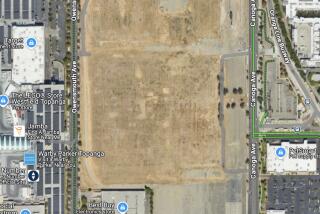Events Leading to Rocketdyne Blast Described
- Share via
Although they have pieced together the events leading up to an explosion that killed two scientists this week, officials at Rockwell International’s Rocketdyne division Friday said the cause of the blast remains a mystery.
“We had two experts conducting these tests,” Rocketdyne President Paul B. Smith said. “That raises a lot of questions. This should never have happened, so we must ask ourselves what went wrong.”
Smith, speaking at Rockwell’s Canoga Park facility, said the two chemicals being tested Tuesday at Rockwell’s Simi Hills test site are well-known rocket propellants that never before have been known to combust without being ignited.
Before the 9:07 a.m. blast, he said, five workers were preparing for the third of five identical experiments testing the shock waves emitted when the chemical mixture burns.
The two earlier trials had gone according to plan: The two chemicals had been placed in the bottom of a shallow aluminum pan coated with sawdust. As a security precaution, the researchers withdrew to a secured building while one other researcher brought in an ignition device and placed it in the aluminum pan. He then retreated to the secured building.
A detonator in the secured building was then unlocked, and the ignition device set off. What followed in those first two trials was a rapid burn, the chemicals consumed in a matter of seconds, and the shock waves were recorded by computer.
But during the third run-through, the chemicals exploded without warning. They mysteriously ignited before the researchers had retreated to the “blockhouse” and before the ignition device had been brought out. Killed were physicist Larry A. Pugh, 51, and engineer Otto K. Heiney, 53.
A third worker, Lee Wells, remained in stable condition Friday at Sherman Oaks Hospital and Health Center’s burn center.
Smith said tests are continuing to determine the exact contents of the shallow pan. But he added that there is a “high likelihood” that the pan held only the two chemicals meant to be tested.
Smith and Mike McHale, Rocketdyne’s vice president of directed energy and imaging, also provided more details of the explosion.
Heiney, a Canoga Park engineer with the company for 10 years who was an expert in solid propellant research, was responsible for the aluminum pan and its contents--the 10 pounds of the thick liquid, glycidal azide polymer, or GAP, and nitrocellulose, a fibrous white solid. Heiney was about two feet from the metal pan and probably making his way with the rest of the workers toward the blockhouse when the explosion occurred, Smith said.
Pugh, who had been with Rocketdyne for 17 years, was in charge of the recording instruments, which transmitted data during the burn through wires to the blockhouse. At the time of the blast, he was about six feet from the pan, near his instruments.
More to Read
Inside the business of entertainment
The Wide Shot brings you news, analysis and insights on everything from streaming wars to production — and what it all means for the future.
You may occasionally receive promotional content from the Los Angeles Times.










